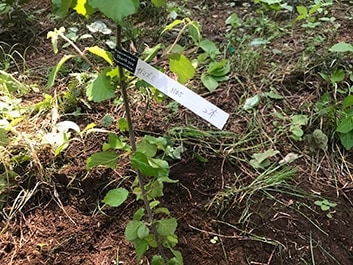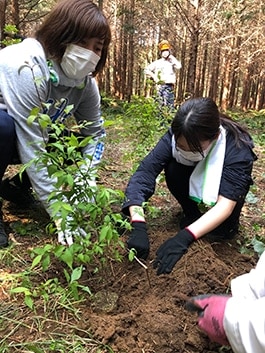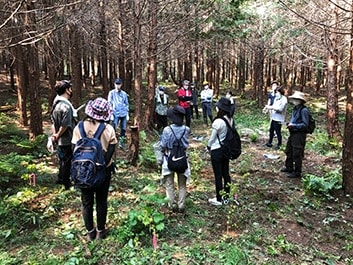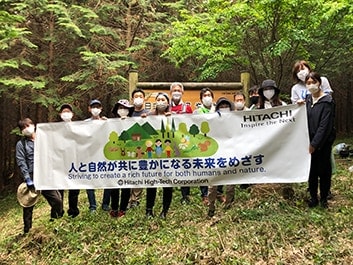Hitachi High-Tech has been working on an update plan for nature restoration since 2020 to improve the Hitachi High-Tech Yasato Forest to an even richer forest over 60 years of afforestation activities that began in 2005.
Last October, we selected candidate plants for introduction from among species native to the area and decided to plant them based on a forestry survey of the Hitachi High-Tech Yasato Forest.
On Friday, May 20, in order to convert a part of the forest into an environment that is more habitable for living creatures, a stand of cypress was cleared to create an area with more light, and seedlings of the selected deciduous broad-leaved trees were planted (18 trees of eight species were introduced: mountain cherry, Styrax obassia, Japanese beautyberry, Acer crataegifolium, Viburnum dilatatum, Rhododendron kaempferi, Ilex macropoda, and Japanese spirea).
We will monitor their growth regularly in the future to experience the improvement of the forest. In order to make the forest a place where wild birds fly, we are also installing additional nest boxes and continuing to observe them with surveillance cameras.
The 16 participants walked for about one hour one way to the Hitachi High-Tech Yasato Forest and worked up a sweat while planting trees and wildflowers, cutting down cypress trees, and performing other afforestation activities. It was a meaningful activity, as the participants felt the importance of biodiversity preservation through the interaction with nature.

Viburnum dilatatum, an introduced species, produces spherical containing red polyphenols in the fall.

Planting Japanese beauty berry, which has light purple.

Each planting being explained after planting 18 trees of eight different species.

Group photo of participants.